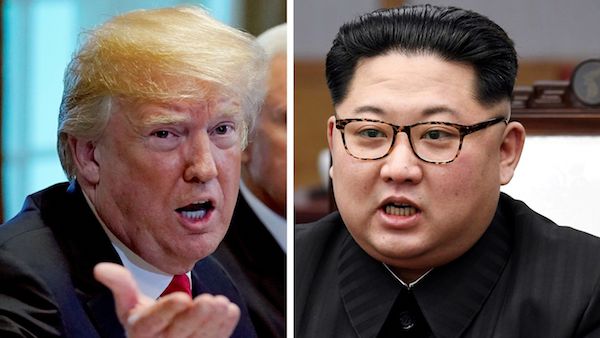

“Notwithstanding the carefully structured discussions between the two leaders — and while Doklam did not figure in the discussions — relations between India and China are unlikely to show any marked improvement in the near, and perhaps even in the medium, term. For the present, avoidance of a conflict will remain the principal objective on both sides, with China no doubt looking for an expansion of opportunities for trade. The key watchwords would, hence, be peace and tranquility”, says the author.
The Brazil, Russia, India, China and South Africa grouping (BRICS) has since long ceased to be of material significance as multilateral institutions go. The recent BRICS Summit in Xiamen (China) only seemed to confirm this. It suggests that BRICS may be going the way of quite a few other organizations.
Inconsequential declaration
Little of consequence appears to have happened, or to have emerged, from the latest summit. The Xiamen Declaration is proof of this. Considering that this meeting was taking place in the shadow of significant global events, notably North Korea’s nuclear provocations and the U.S. response, other serious developments in Asia, including Afghanistan and West Asia, apart from issues of consequence elsewhere, the absence of any reference to these events in the Summit Declaration suggests that BRICS is clearly out of sync with current realities.
Much has been made by the media about the inclusion of Pakistan-based terrorist groups such as the Lashkar-e-Taiba and the Jaish-e-Mohammed among the many terrorist groups active in the region. It, however, needs to be understood that this was merely a reiteration of something already mentioned in the declaration of the Heart of Asia Conference held in India in December 2016.
The Heart of Asia declaration had highlighted the ‘gravity of the security situation in Afghanistan and in the region, drawing attention to the high levels of violence caused by the Taliban, terrorist groups including the Islamic State, al-Qaeda and its affiliates, the Haqqani network, Islamic Movement of Uzbekistan, East Turkestan Islamic Movement (ETIM), Lashkar-e-Taiba, Jaish-e-Mohammed, Tehreek-e-Taliban Pakistan, Jamaat-ul-Ahrar, Jundullah and other foreign terrorist groups’. To attach special significance to the inclusion of this passage in the Xiamen Declaration, and view it as China administering a resounding slap on its ally, would be a profound mistake.
The BRICS declaration is perhaps more significant for what it did not include. Absence of any mention of China’s Belt and Road Initiative (BRI) — even though Beijing sets such great store by it — is one. At this point, one can only speculate on the reason. It is possible that China may not have wanted to introduce a discordant note into the proceedings — knowing India’s reservations regarding the project — of a conference that it was presiding over. Or perhaps, China does not think that BRICS could make a material contribution to the achievement of its objective.
BRICS’ limited scope
One takeaway from the conference also could be that China sees little use of BRICS to achieve its geopolitical and geo-economic objectives across Asia and beyond. BRICS as a body can hardly help China in dealing with a knotty problem like North Korea. It has no need for BRICS to deal with problems such as the South China Sea and freedom of navigation on the seas. From its point of view, BRICS is an outlier as far as pressing problem in the region and beyond are concerned.
BRICS suffers from other infirmities as well. Brazil and South Africa are increasingly becoming peripheral to BRICS’ aims and objectives. Russia is currently more preoccupied with establishing its supremacy in Eurasia, and its interest in BRICS is not of the same order as in the past. This leaves only India, and limits the scope of BRICS to issues and regions such as Afghanistan that have featured in previous BRICS meetings.
The summit, however, provided an opportunity for leaders to meet and conduct business. For instance, Prime Minister Narendra Modi’s intervention at the BRICS Business Council helped highlight India’s emergence as one of the most open economies on the globe. At the BRICS Emerging Markets and Developing Countries Dialogue, Mr. Modi highlighted India’s long tradition of partnership with fellow developing countries. Among the ten commitments he listed was that of creating a safer world by “organized and coordinated actions on at least three issues: counter-terrorism, cyber security and disaster management”. The Prime Minister also called for a skilled, healthier and equitable world, as also the critical importance of sustainable development goals.
Bilaterals, Beijing détente
Considerable significance attaches to the meetings held between Mr. Modi and the Russian and Chinese leaders on the sidelines of the summit. The emphasis during his meeting with Russian President Vladimir Putin seems to have been on the restoration of ties between the two countries to levels that existed in the past. Discussions also centered on ways to boost bilateral trade and investment, especially in the oil and natural gas sectors.
The meeting with Chinese President Xi Jinping acquired particular significance coming as it did after the over two-month-long stand-off at the Doklam Plateau. The convergence between the two countries on international terrorism at the BRICS Summit seems to have led to a thaw for the time being. Assurances emanating from the meeting, and the adoption of a low-key approach, were aimed at enhancing mutual trust. The intention seemed to be to establish ‘new ways’ to prevent future incidents such as Doklam, and concentrate on essentials needed to establish better relations.
Notwithstanding the carefully structured discussions between the two leaders — and while Doklam did not figure in the discussions — relations between India and China are unlikely to show any marked improvement in the near, and perhaps even in the medium, term. For the present, avoidance of a conflict will remain the principal objective on both sides, with China no doubt looking for an expansion of opportunities for trade. The key watchwords would, hence, be peace and tranquility.
The road after Doklam
It would take much longer for trust to return; as it is, trust between the two countries had begun to be affected as India moved closer to the U.S., strengthened its relations with countries like Japan and Vietnam that were not too well disposed towards China, and participated in multilateral defense exercises which appeared to have an anti-China slant. In the circumstances, restoring trust is not going to be easy.
In Astana in June this year, when the Indian and Chinese leaders met on the sidelines of the Shanghai Cooperation Organization Summit, the emphasis was on not allowing “differences to become disputes”. This was reflected in the so-called Astana Understanding. Doklam effectively put paid to this. While Mr. Modi is possibly willing to put Doklam behind him, the Chinese are unlikely to do so and are more likely to moderate their response keeping the Doklam incident in mind. China may continue to reiterate the obvious and talk of ‘peaceful co-existence and mutually beneficial cooperation to strengthen bilateral relations’, but India needs to be cautious. China is likely to view India’s actions with even greater suspicion than hitherto.
The kind of language employed by the Chinese side in the context of the meeting of the two leaders is an index of this. Mr. Xi observed that China and India are “each other’s opportunities and not threats”; India and China “need to show to the world that peaceful co-existence and win-win cooperation is the only right choice for the two countries”; China would like to work with India to uphold the Five Principles of Peaceful Co-existence (Panchsheel), advance political mutual trust, mutually beneficial cooperation and move forward the development of bilateral relations along the right track. This might sound like accenting the positive in Sino-Indian relations and moving to a more calibrated approach, but it does not necessarily reflect any greater willingness on the part of China to see the other side’s point of view.
Evidently, the China-centric world view will continue to prevail. For the moment, China is anxious to maintain peace on its border with India, as China has lately been sensing opposition to its policies from many other countries, apart from a host of problems in its neighborhood. In totality, these could undermine the Chinese Dream of Mr. Xi. North Korea is perhaps the most vexatious of the problems, one that is happening on China’s doorstep. Smaller countries of Southeast Asia such as Indonesia, and even Singapore and Vietnam, are signaling opposition to China’s restrictions on rites of maritime passage and freedom of navigation in the seas around China.
China also faces an ever-widening arc of threats from terrorists of different categories such as the ETIM, the Islamic Movement of Uzbekistan and Uighur separatists to its West. With the critical 19th Party Congress set to take place soon, peace and tranquility on its periphery has thus become an imperative necessity.
(The author is a former National Security Adviser and a former Governor of West Bengal)





Be the first to comment